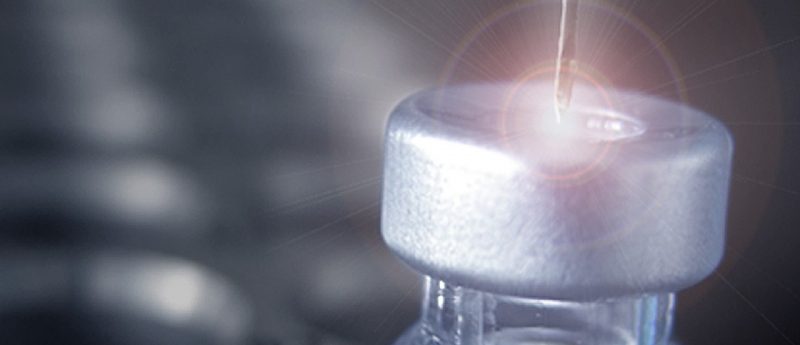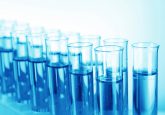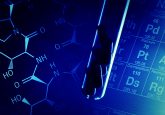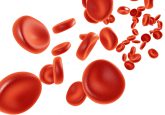Solid-phase extraction: a principal option for peptide bioanalytical sample preparation

Robert MacNeill received his Bachelor’s degree with Honors in Chemistry from Heriot-Watt University
then his MSc inanalytical Chemistry from the University of Huddersfield, both in the United Kingdom. Robert is also a Chartered Chemist and Member of the Royal Society of Chemistry. With 18 years of experience in all aspects of quantitative bioanalytical LC–MS/MS method development, nine of these years heading method development activities within HLS/Envigo, and a regular author and peer reviewer for the journal Bioanalysis, Robert is a recognized expert and innovator in the field.
In his current role Robert coordinates all LC–MS method development and associated training, takes the lead in keeping abreast of innovation and technological development in the industry, coordinating in-house research projects and technical writing.
In this installment of Robert MacNeill’s (Envigo) column, Robert proposes the possibility of using solid-phase extraction for peptide sample preparation accommodating the polar and charged nature associated with peptides.
The quantitative methodologies produced in the realm of regulated bioanalysis are innately required to be unfailingly solid in their performance and reliability. With the contemporary normality of aspects such as incurred sample reanalysis and internal standard peak area control charts, the performance is also put to the test more than ever before, and monitored accordingly. Meanwhile, the kind of analyte typically taking center stage is becoming ever more challenging. Oligonucleotide and peptide/protein-based therapeutics, for instance, continue their rise.
For proteins by LC–MS, the accepted standard approach remains using an optimized digestion protocol and indirect quantification using analysis of signature peptides after cleanup, although there is a small but increasing collection of work done to quantify these entities intact by the same LC–MS endpoint especially as high resolution technology and quantitative software improves.
We are thus faced with the vast majority of such work involving peptidic analytes that are very polar in nature, charged, and amphoteric. As a result, we require biological sample preparation/extraction procedures to be suited to these properties.
Protein precipitation of plasma samples is an option, but this achieves little more than eliminating the larger protein content of the sample, like albumin – a nice choice if you wish to screen everything else that is in the sample over one or two injections, but if the aim is to produce the most selective and reliable quantitative method for a definitive small number of analytes, this option would not be conducive to success. And this would be not only due to the lack of selectivity. The more polar a compound is the less likely it will remain solubilized upon the addition of organic solvent to the aqueous matrix.
Perhaps worse than attaining very little recovery would be what accompanies very little recovery if it is decided to use the technique – that is, a great imprecision in the recovery possibly changing markedly from sample to sample, with a high dependence on the slightest fluctuations in key factors like temperature and pH.
Liquid-liquid extraction, or any derivative based on partitioning into a water-immiscible medium, is a fairly established no-go area for extraction of peptides from biological fluids, and this is due to the propensity for there to be zero recoveries. Peptides, being all about polarity and electrostatic interactions, tend not to partition at all into media of such limited polarity.
Therefore, we are left with not much else but solid-phase extraction to use for these challenges. What has been historically used to obtain the cleanest most selective extracts for small molecules is easily translatable to peptides, keeping in mind how these differ from most small molecules.
This means, besides instability and non-specific binding concerns, catering to the generally greater polarity of what is being extracted and accepting the prompt towards embracing the charge manipulation as a means to garner great selectivity.
What of one obvious grievance, that solid-phase extracts are expected – whether reversed-phase, mixed-mode or HILIC – to result in very high organic ultimate eluate composition and, since evaporating and reconstituting is out of the question for most peptides, how can this easily interface with a typical high-aqueous initial setting in the reversed-phase gradient of the analytical chromatography? The obvious answer is to add the appropriate volume of aqueous modifier to each sample, but this takes away from any intended concentration effect, and that is desired far more often than not.
Alternatively, the sorbent bed weight could be lowered in many cases, or the complementary chromatography could be optimized as HILIC. But there is another phenomenon that we can frequently take advantage of, perhaps much less well-realized since as far as I know there aren’t published data to support the following optimization approach as yet. It actually ties into obtaining best HILIC retention. Where ion-exchange is involved, including mixed-mode procedures on either polymeric or silica-based sorbents, it is often the case that the eluting power of a solvent mixture can be enhanced by increasing the aqueous content.
This may seem to be counter-intuitive. However, it is known that basic moieties on compounds alter in their basicity according to organic content in the medium in which they are solvated. Basicity is actually anticipated to increase dramatically upon excursion through 60-100% acetonitrile. In this region a basic compound will show a significant increase in pKa, i.e., what amounts to increased basicity and accordingly greater abundance of ionized forms, and this is far more pronounced relative to such changes in the lower organic composition region.
We can use this knowledge to suppose that we could release a basic compound electrostatically tied to the sorbent, at the desired elution stage, by reducing the acetonitrile content such that the basicity is also reduced to an extent sufficient to make the neutral form predominate. It can be shown to work too. This is without compromising the withdrawal of retentive power of an accompanying non-electrostatic reversed-phase retentive mode.
Hence, we can have eluates with much higher aqueous content right off the bat than we may have thought feasible, and we can take advantage of the benefits in better interfacing with reversed-phase chromatography, maintaining free peptide solubility and sample concentration.
Altogether, it amounts to a message that we can do even more with the solid-phase extraction domain than what we might have thought! Often it is well worth a little more optimization time for the sake of producing that truly invulnerable method.
This article is part of Robert MacNeill’s (Envigo) quarterly column for Bioanalysis Zone which focuses on quantitative method design. You can read past installments of the column here.
Click here for more information on Envigo.






